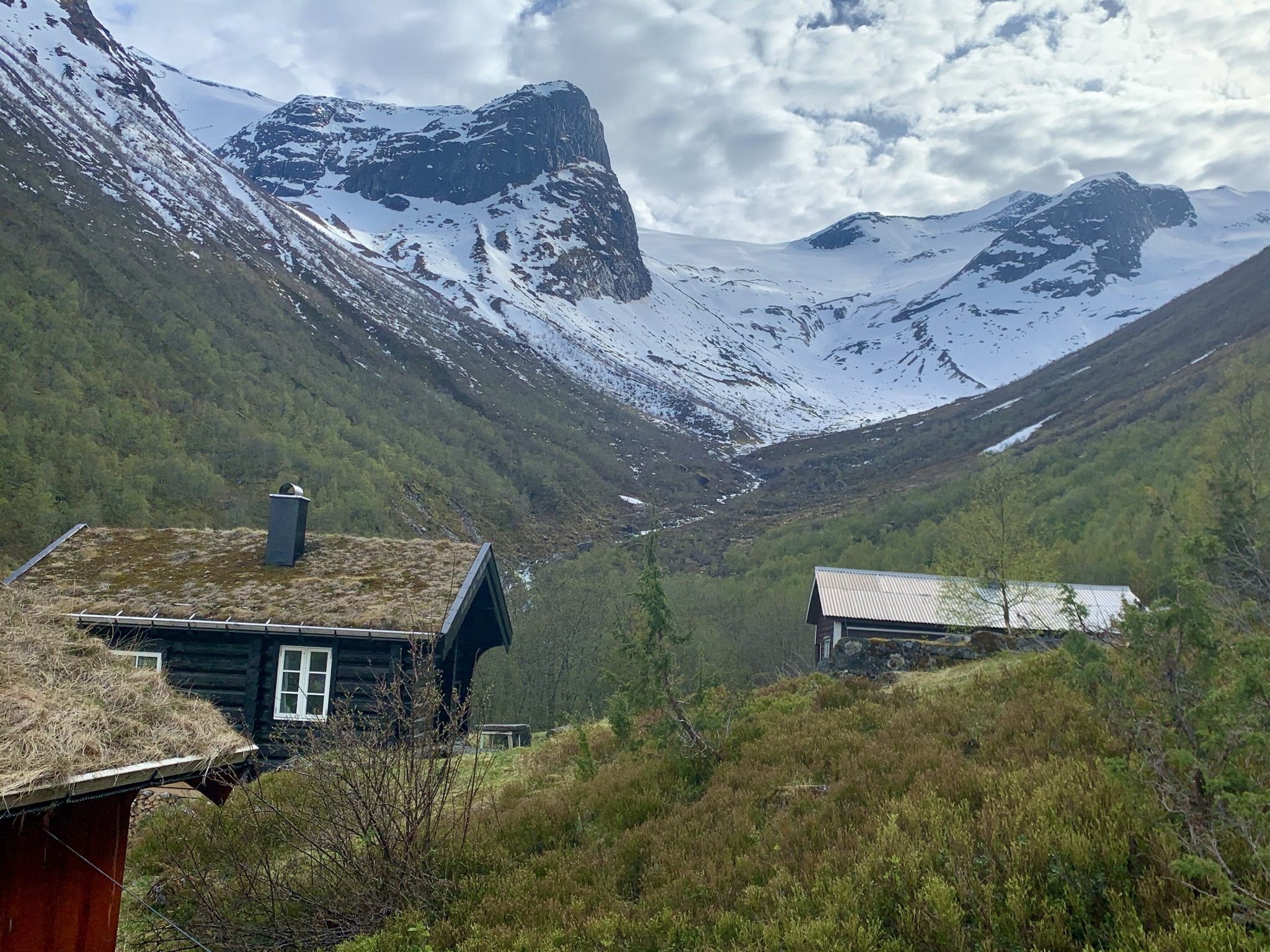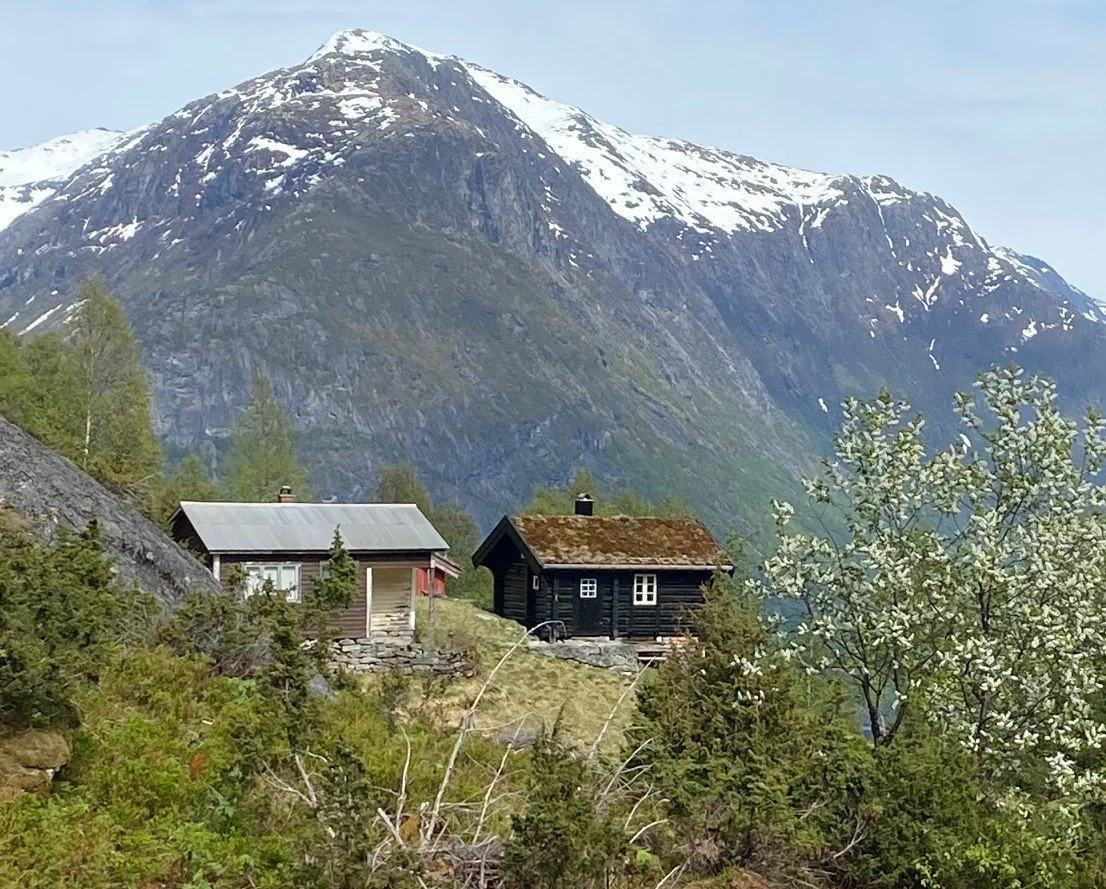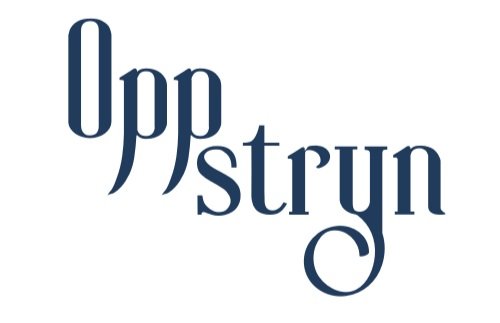Hike in Fosdalen
Fosdalssetra is situated at just 380 meters above sea level, making it the lowest of all the mountain farms in Oppstryn. However, the hike can be somewhat challenging, as you will ascend approximately 350 meters in relatively steep terrain.
Difficulty: Moderate. The trail is somewhat challenging in certain areas.
Length: 1,7 km one way.
Elevation gain: 350m
Duration: 2,5 hours round trip.
Season: Spring – Autumn
Parking: You can park at the parking lot by Rv.15, near the Jostedalsbreen National Park Center.
Note: It is safe to walk to the mountain farm, but deeper into the valley, there may be a risk of snow and rock avalanches early in the summer.
Hike description
Fosdalssetra is situated at just 380 meters above sea level, making it the lowest of all the mountain farms in Oppstryn. However, the hike can be somewhat challenging, as you will ascend approximately 350 meters in relatively steep terrain.
Fosdalen offers beautiful nature and fascinating cultural heritage from ancient times. The mountain farm was abandoned before World War II, and today, only sheep graze in the valley.
You can park by Rv.15, near the Jostedalsbreen National Park Center.
From the parking lot, follow the tractor road along the Fosdøla river. The road passes a gravel pit and continues up to Holekvia.
From Holekvia, a forest road leads further up a relatively steep hill on the left. A short way up, you will pass an old barn. Further along, you have the option to take a shortcut through the spruce forest on the right.
If you stay on the forest road, you will pass two large boulders called Røvasteinane. In the past, this was the first resting spot on the way to Fosdalssetra. The stones likely got their name because foxes once had dens her. Fox is pronounced "røv" in the Oppstryn dialect.
Where the forest road makes a sharp right turn, the mountain farm trail continues straight ahead. For a short distance, the trail follows the edge of the gorge above Fosdøla. Spruce trees were planted here to prevent livestock from falling off the edge during the seasonal migrations to the farm. Before that, a brushwood fence had to be repaired each spring.
Once past the spruce-lined section of the gorge, you will soon reach the second resting place on the route, Seljefloten. Here, the terrain levels out slightly, opening up a view towards Oppstrynsvatnet, Glomsdalen, and Hjelledalen on the opposite side.
The name "Seljefloten" comes from "selje" (willow) and "flot," meaning a flat or open area. However, today, alder, birch, and rowan dominate the vegetation.
After Seljefloten, you will arrive at Setrebakken, the steepest part of the trail. Along the path, you will see some old, uniquely shaped birch trees—take a closer look.
At the top of Setrebakken, you will see the huts of Fosdalssetra.
Fosdalen is a short valley shaped by glaciers and rivers. Snow and rock avalanches are common in the steep mountainsides.
Fosdalssetra lies at the edge of an avalanche-prone area, and over the years, some of the huts have succumbed to the strong winds accompanying avalanches. Originally, there were six huts – three belonging to Sandvik and three to Fosnes.
Cows were milked at the mountain farm until 1935. Until 1970, cattle grazed in Fosdalen, but since then, only sheep have roamed the valley.
The valley is rich with alder forests, along with some rowan and birch trees. Fosdalen is one of the few places in Strynedalen where monkshood and foxglove grow together.

View from the trail to Fosdalssetra. Looking towards Fosnes and Glomsdalen.

This area was once a hayfield. Today, it serves as pasture for sheep. Holekvia is a terrace formed by loose sediments carried by the Fosdøla river during the melting of the great inland ice more than 10,000 years ago. These sediments were deposited into the sea, which at that time was 75 meters higher than today and reached all the way up to Folven and Guddal in Hjelledalen.

Holekvia. We see an old barn belonging to the Sandvik farm, owned by Per Ivar Skåre. In the foreground, part of an old stone wall is visible. Stone walls are now recognized as valuable features of the traditional agricultural and cultural landscape in rural areas.

Røvasteinane, one of the stones was the perfect height to sit on when returning from the mountain farm with heavy milk pails on their backs. It was common on all mountain farm trails to have a specific resting stone – or sometimes several – that they called "Kvile" (Rest).

Spruce trees were planted along the edge of the gorge to prevent livestock from falling off.

The gorge in the foreground. We are looking towards Hjelle and Hjelledalen

Seljefloten. We are looking towards Glomsdalen and Hjelledalen.

Setrebakken, here several old birch trees stand, greeting us warmly.

We see an old birch tree where fungi grow densely on the lower part of the trunk. Fungi are a large group of mushrooms that primarily grow on old trees. They are parasites that break down the wood. Many of these fungi play an important role in the ecosystem.

In the upper part of Setrebakken, the area opens up, and we get a view of the huts at Fosdalssetra. A landowner has been diligent in clearing the forest and keeping the terrain open around the huts and along the trail. Due to the lack of grazing animals, new shoots (root shoots from trees) are gradually growing in. From the summer farm, you can see all the way to the end of Fosdalen. If you turn around, you have a view over a large part of Oppstrynsvatnet, Hjelledalen and Gloms- dalen, with the mountain farm Segestad. The three summer farm huts belonging to the farms at Fosnes were called Ivaselet, Andersselet, and Oppigardselet. Ivaselet and Andersselet collapsed on their own, while Oppigardselet was taken by a snowstorm. The huts belonging to Sandvik were Kristianselet, which collapsed on its own during the war, Toreselet, which has now been torn down, and Monsselet. Monsselet was built in 1889. In 1968, it burned to the ground, but one year later, a cabin was built on its foundation.

In recent years, two cabins have been built at Fosdalssetra. We can see part of Amund Mork’s cabin, which is orange, Magnus Guddal’s cabin, which is black, and to the right, we see Monsselet. In the background, we can see Tafsehyrna (1,300 meters above sea level) and Fosdalskyrkja (1,773 meters above sea level).

The huts/cabins at Fosdalssetra from another angle. In the background, we see Glomnesegga (1,371 meters above sea level) and Blåhyrna (1,706 meters above sea level).

Just east of the huts at Fosdalssetra, the Tverråna stream flows, a ravine originating from Gullkoppen. Gullkoppen is a bowl-shaped hollow in the mountain Kampen. The summer farm path from Fosnes crossed this ravine, but the area is prone to water accumulation and avalanches. Therefore, the path has not been maintained.

Tyvareset. View towards Hjelle and Hjelledalen. Photo: Tarald Harstad

Tyvadalen. View towards Loen and Olden. Photo: Tarald Harstad

The upper part of Fosdalen. Tyvareset on the left, Storskredfjellet (1,815 meters above sea level) on the right. Photo: Tarald Harstad






